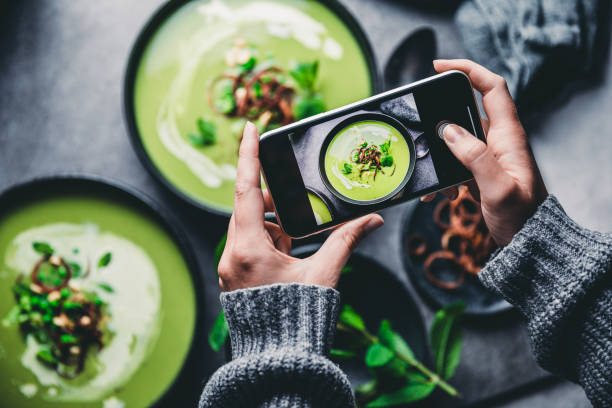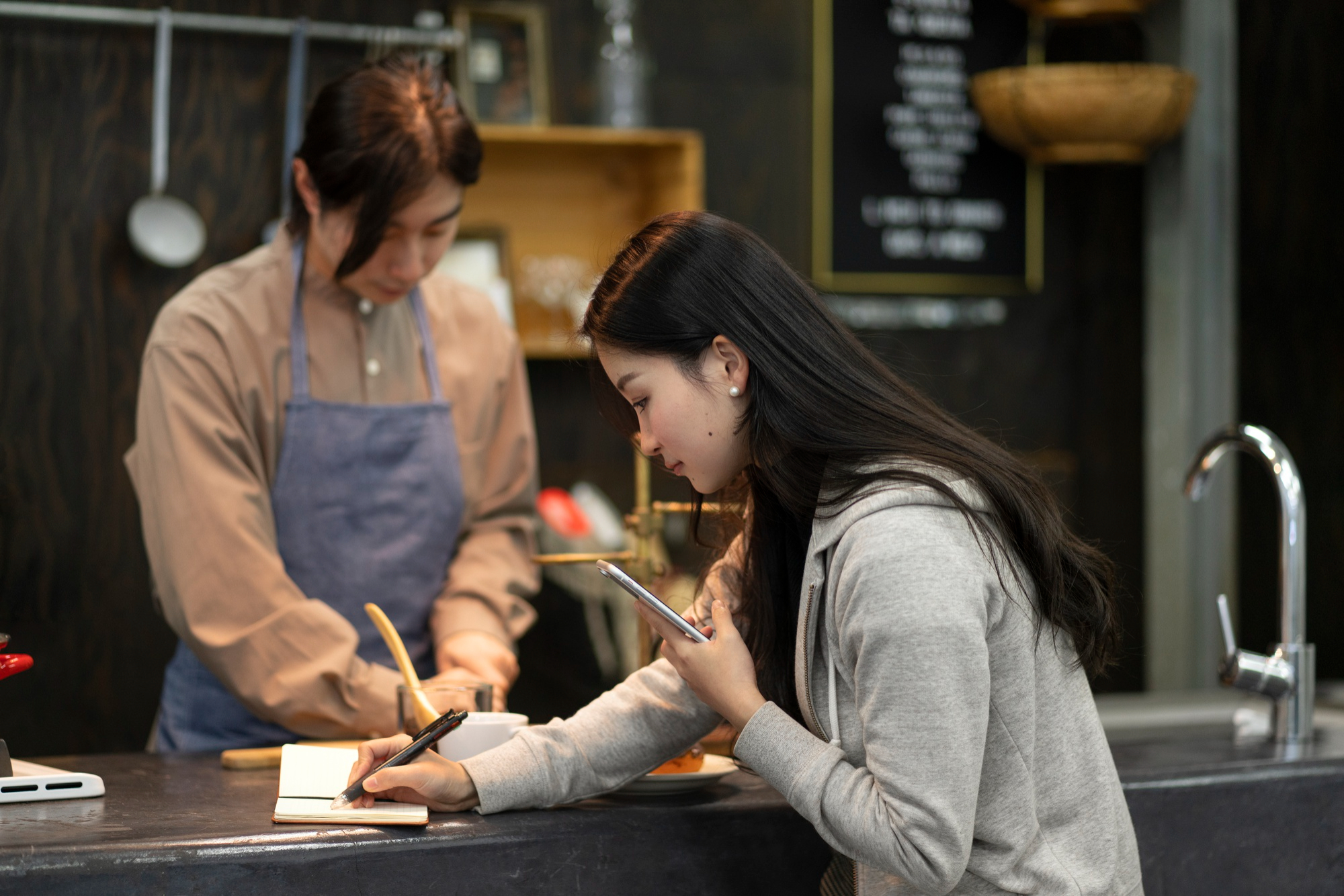 SHARE
SHARE
Low Angle Shot vs. High Angle Shot: Which is Better for Food Photography?
Briantama Afiq Ashari
If you frequently scroll through Instagram or TikTok, you've probably noticed that food photos are now like works of art.
Photography technique is key to making food look more appealing. One technique photographers often use is playing with angles.
From here comes the big question, is a low angle shot or a high angle shot more suitable for making food look delicious?
Come on, let's discuss it together so you can become even better at creating culinary content.
Why is Angle Shot Important for Food Photography?
Imagine ordering a plate of waffles topped with melted ice cream and chocolate syrup.
If you take a normal photo, the results won't be as impressive. However, once the photographer uses the right angle, the food immediately looks premium.
This is why angle is crucial in photography. In fact, many food bloggers are willing to try different angles just to find the best results.
This is where the discussion about low-angle and high-angle shots gets even more interesting. These two techniques have different visual effects that can change people's perception of the food in the photo.
Read Also: Mise en Place: Meaning, Purpose, and Practical Guide
What is a Low Angle Shot?
Before we delve any further, let's first familiarize ourselves with the concept of a low-angle shot.
As the name suggests, this is a technique of shooting from a low position.
The camera is pointed from the bottom up. When used for food, a low-angle shot makes the dish appear more magnificent.
For example, a latte with thick foam will appear more dramatic from below. This technique is often used to create an elegant or powerful impression.
Many culinary photographers use this method when they want to highlight the height of a stack of burgers, layers of cake, or a glass of fancy drink.
What is a High Angle Shot?
Source: istockphoto
If we discussed the bottom view earlier, now let's discuss the top view. A high-angle shot is a technique where the image is taken from above.
Also often called a bird's-eye view. For food, the effect is very different from a low angle.
Well, if you ever asked what is a high-angle shot, the answer is yes, this is a shooting technique with a camera angle that is higher than the object.
So the camera appears to be "peeking" from above. In the culinary world, high-angle shots are a favorite because they can show the full composition of a table.
For example, when having brunch with friends, a table full of pancakes, salad, and coffee can all be seen in one shot.
Read Also: Garden Salad: A Healthy and Fresh Menu That Many People Love
Perbandingan Low Angle Shot vs High Angle Shot
Now let's compare the two. A low-angle shot makes the food appear tall, majestic, and focuses on specific details.
It's perfect for food with interesting structures. Meanwhile, a high-angle shot is superior for showcasing the overall atmosphere.
Perfect for flat-lay photos of food on a table. If you have a lot of plates in different colors, this technique will create a neat result.
So, if you want to highlight a special dish, choose a low angle. But if you're aiming for a group hangout vibe, a high angle is much better.
What about the Dutch Angle Shot?
Source: istockphoto
Besides these two techniques, there's also the Dutch angle shot, a photography technique where the camera is tilted.
The effect makes the resulting image look edgier and more dramatic. In food photography, the Dutch angle shot isn't always the preferred choice.
However, if you want a more artsy photo, you can try this technique. For example, photograph a brightly colored mocktail or a modern dessert with unique plating.
Food Content Goes Viral Thanks to Angle
Many culinary brands have gone viral thanks to their precise angle selection. For example, a cafe in Jakarta has often received praise for its consistent photography.
It's easy to see everything on the menu in one frame. Some burger joints even deliberately use low-angle shots to show off the sheer height of their meat.
The photo immediately makes people hungry and want to try it. So, choosing the right angle isn't just about style, but also branding strategy.
Read Also: 5 Reasons Why Culinary Entrepreneurs Should Try Seasonal Menus
Practical Tips for Choosing a Shot Angle
If you're confused about which angle to use, try these tips:
1. Think about the purpose of your photo
If you want to focus on one food, use a low angle shot.
2. Consider the number of objects
If there are a lot of plates, a high angle shot is neater.
3. Experiment
Don't be afraid to try a Dutch angle shot to get more unique results.
4. Get to know the brand mood
If your brand is elegant, a low angle might be more appropriate. If your brand is fun and casual, a high angle might be more appropriate.
For some, talking about camera angles might seem technical. Well, in the culinary world, it's all about storytelling.
When you use a low angle shot, it's as if you're saying "look how special this menu is".
Meanwhile, a high angle shot is more about the vibe, as if you are inviting other people to join you for a meal.
Even with a Dutch angle shot, you can show the playful side of a menu. So, angle is a way to add flavor to a photo.
FAQ About Low Angle Shots and High Angle Shots for Food Photography
1. What is a low angle shot in food photography?
A low-angle shot is a technique where the subject is photographed from a lower position than the subject.
This technique is suitable for highlighting the texture, height, and details of food, especially layered dishes or tall drinks.
2. When is the right time to use a high angle shot?
A high-angle shot, or overhead photo, is ideal for food compositions on a surface, such as salad bowls, pizza, brunch platters, or beautifully arranged dining tables.
This technique helps showcase all elements within a single frame.
3. Can these two angles be combined in one photo session?
Absolutely. Photographers usually take several angles to choose the best result. Low-angle shots emphasize detail and height, while high-angle shots emphasize layout and composition.
4. Which is more suitable for restaurant food photography?
There's no single answer; it depends on the type of food. If the food has an interesting shape and layers (burgers, cakes, latte), use a low-angle shot. If the food looks appealing from above (ramen, pizza, platters), use a high-angle shot.
Conclusion
Both low angle shots and high angle shots play a vital role in creating appetizing food photos.
A low angle shot highlights the height, texture, and elegance of a dish—perfect for showcasing premium or layered foods.
Meanwhile, a high angle shot captures the overall composition, ideal for creating a cozy, inviting vibe that works well for social media.
For F&B business owners, understanding these angle techniques isn’t just about aesthetics—it’s a powerful branding strategy.
The right photo can attract customers before they even take a bite.
To make your branding and restaurant operations more efficient, manage everything with ESB’s digital ecosystem — from ordering and inventory to automated sales reports, all in one platform.
Contact ESB today at esb.id and discover the best digital solutions to grow your F&B business!
 SHARE
SHARE




